In the ever-evolving landscape of kitchen appliances, the demand for efficient, reliable, and compliant products has reached new heights. As consumers seek convenience and innovation, manufacturers are pushed to meet stringent standards to ensure safety and performance. Among these standards, CE-EMC compliance for appliances, particularly those with a 2200W specification, stands out as a crucial factor in achieving global market success. This piece delves into the significance of CE-EMC compliance, the trends shaping consumer preferences in the US and EU markets, and the myriad benefits that compliant 2200W appliances bring to both businesses and consumers alike.
Understanding the Importance of CE-EMC Compliance in Kitchen Appliances
In the bustling world of kitchen appliances, where innovation and efficiency reign supreme, the significance of compliance with the CE (Conformité Européenne) and EMC (Electromagnetic Compatibility) standards cannot be overstated. These certifications are not just bureaucratic hurdles but essential guarantees for the safety, performance, and marketability of kitchen appliances across the European Union and beyond.
The CE mark signifies that a product meets all the essential health, safety, and environmental protection requirements set by European legislation. For kitchen appliances, this is particularly crucial as they are used in close proximity to food and water, and any failure to meet these standards could lead to severe consequences, including electrical hazards and product recalls.
EMC compliance, on the other hand, ensures that kitchen appliances do not emit excessive electromagnetic interference that could disrupt other electronic devices or cause them to malfunction. This is especially important in today’s interconnected homes, where multiple electronic devices coexist and rely on each other’s stable operation.
Let’s delve deeper into why CE-EMC compliance is so vital in the kitchen appliance industry:
Safety First: Protecting Users and Property
The primary reason for CE-EMC compliance is safety. Kitchen appliances, such as ovens, dishwashers, and microwaves, are integral to daily life, and any malfunction can lead to accidents. A non-compliant appliance might overheat, pose a risk of electric shock, or even cause a fire. By adhering to CE and EMC standards, manufacturers ensure that their products are safe to use, thereby protecting both the user and the property.
Consumer Trust and Market Access
In the competitive kitchen appliance market, consumer trust is paramount. The CE mark is a symbol of quality and reliability that consumers recognize and trust. Appliances with this certification are more likely to be chosen by consumers, giving manufacturers a competitive edge. Additionally, compliance with these standards is often a requirement for market access in the EU, making it a necessity rather than a luxury for companies looking to expand their business in this region.
Environmental Considerations
CE-EMC compliance also encompasses environmental protection. Appliances that meet these standards are typically designed with energy efficiency in mind, which not only reduces utility bills for consumers but also has a positive impact on the environment. As sustainability becomes a more pressing issue, appliances that are environmentally friendly are more likely to resonate with eco-conscious consumers.
Technological Integration and Future-Proofing
The modern kitchen is a hub of technology, with appliances increasingly integrating smart features. CE-EMC compliance ensures that these devices can operate seamlessly within a home’s technological ecosystem without causing interference. As kitchen appliances become more connected, maintaining EMC compliance becomes even more critical to prevent issues such as signal degradation or system crashes.
Regulatory Compliance and Legal Obligations
Manufacturers must comply with a myriad of regulations to bring their products to market. CE-EMC compliance is just one aspect of this regulatory landscape, but it is a significant one. Non-compliance can lead to legal repercussions, including fines, product seizures, and damage to the company’s reputation.
Costs and Resources Invested in Compliance
Achieving CE-EMC compliance is not without its costs. Manufacturers must invest in testing, certification, and possibly redesigning their products to meet the standards. However, this investment is often offset by the long-term benefits of reduced liability, increased sales, and a competitive edge in the market.
In conclusion, CE-EMC compliance in kitchen appliances is not just about meeting regulatory requirements; it is about building trust, ensuring safety, and preparing for the future. As the kitchen appliance industry continues to evolve, with new technologies and consumer expectations shaping the landscape, the importance of CE-EMC compliance will only grow. Manufacturers that prioritize this aspect of their product development will be well-positioned to thrive in a market that demands excellence and reliability.

Introduction to the European and American Kitchen Appliance Markets
The European kitchen appliance market is a vibrant and diverse sector, reflecting the continent’s rich culinary traditions and modern lifestyle trends. From the bustling cities of Paris and Rome to the cozy homes in Sweden and the UK, the demand for efficient, stylish, and user-friendly appliances is ever-present. This market is characterized by a strong focus on energy efficiency, innovation, and sustainability, with consumers increasingly seeking eco-friendly options.
In the United States, the kitchen appliance industry is similarly dynamic, though it has its unique nuances. American consumers are known for their preference for convenience, performance, and advanced technology. The market is segmented into various categories, including refrigerators, dishwashers, ovens, and small appliances, each with its own set of preferences and demands.
In Europe, the kitchen appliance market is heavily influenced by stringent regulations and standards. The region is a leader in energy-efficient appliances, with products often exceeding the minimum requirements set by the European Union. Brands like Siemens, Bosch, and Miele have established a strong presence, offering a wide range of products that cater to different budgets and needs.
On the other side of the Atlantic, the American market is vast and varied, with a significant focus on brand loyalty and innovation. Major players such as Whirlpool, KitchenAid, and GE have a substantial market share, and they continually push the boundaries of what’s possible in kitchen technology. Smart appliances, for instance, are becoming increasingly popular, with features like remote control and integration with home automation systems.
The European market is also characterized by a strong emphasis on design and aesthetics. Many European brands pride themselves on creating appliances that not only perform well but also look good in the kitchen. This is evident in the sleek lines and minimalist designs that have become synonymous with European kitchen appliances.
In contrast, the American market tends to be more eclectic, with a mix of traditional and modern styles. American consumers are often willing to invest in high-end appliances that offer unique features and superior performance, making the U.S. market a fertile ground for premium brands.
Both markets have seen significant growth in the category of small kitchen appliances, which include items like coffee makers, toasters, and blenders. These products are often seen as an extension of the consumer’s personal style and are frequently updated with the latest technology.
In Europe, there is a growing trend towards multi-functional appliances that can perform various tasks, such as a countertop oven that can also toast and broil. This reflects a desire for space-saving solutions and a reduction in the number of individual appliances cluttering the kitchen.
Similarly, in the U.S., there is a trend towards smart kitchen technology, with appliances that can be controlled via smartphones or tablets. This trend is not only about convenience but also about the ability to monitor and control energy usage, which is a significant concern for many American consumers.
Despite these differences, both the European and American markets share a common goal: to provide consumers with appliances that enhance their daily lives. Whether it’s through energy efficiency, innovative design, or cutting-edge technology, the kitchen appliance industry in both regions is constantly evolving to meet the needs and desires of their customers.
In conclusion, the European and American kitchen appliance markets are distinct yet interconnected, each with its own set of characteristics and consumer preferences. Understanding these differences is crucial for manufacturers and retailers looking to enter or succeed in these dynamic markets. Whether it’s the sleek, efficient designs of Europe or the tech-savvy, convenience-driven approach of the U.S., the kitchen appliance industry continues to thrive on innovation and customer satisfaction.
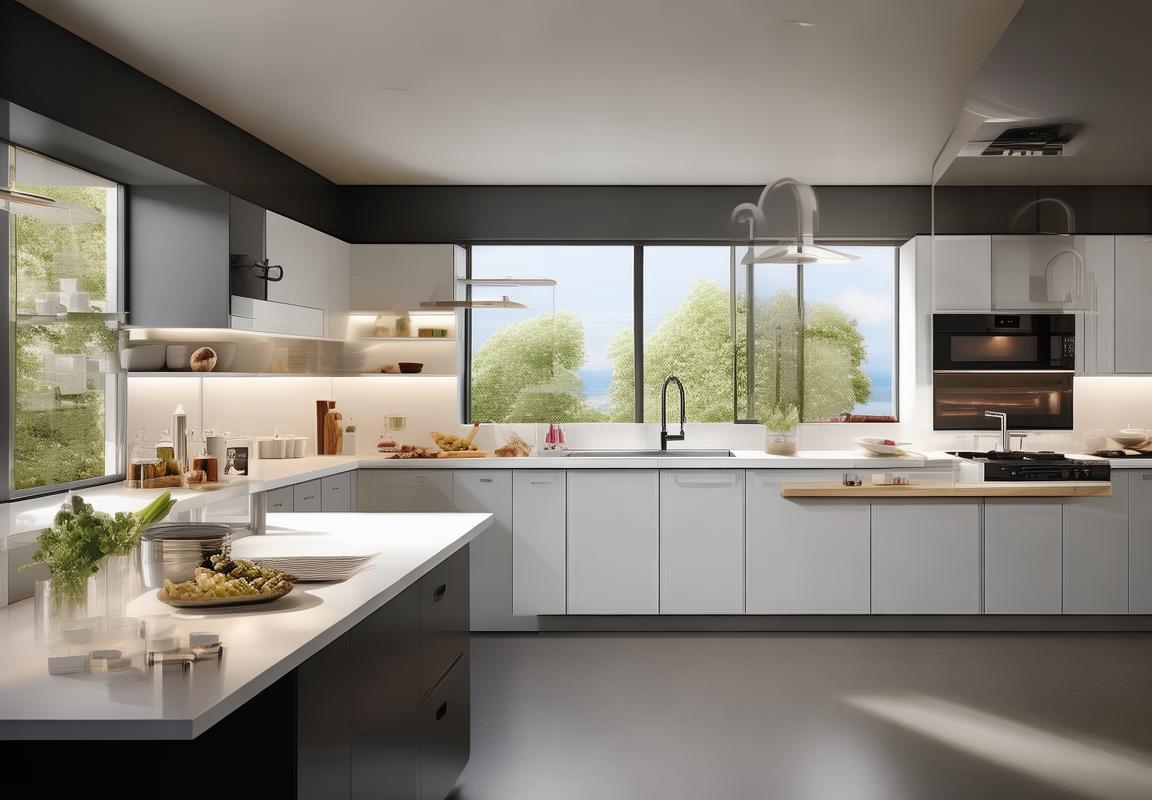
What is CE-EMC Compliance and Why It Matters
CE-EMC compliance, or Conformité Européenne – Electromagnetic Compatibility, is a critical aspect of the design and manufacturing process for kitchen appliances. It refers to the adherence to specific regulations and standards that ensure these devices operate within a defined electromagnetic environment without causing interference to other electronic devices or systems. Understanding CE-EMC compliance is essential because it directly impacts the safety, performance, and marketability of kitchen appliances.
The CE mark, which is often seen on products in the European Union, signifies that a product meets all the necessary health, safety, and environmental protection requirements set by the European Community. EMC, on the other hand, is about ensuring that the appliance does not emit electromagnetic interference (EMI) that could disrupt the operation of other equipment, nor is it susceptible to external electromagnetic disturbances.
In the European market, CE-EMC compliance is governed by the Electromagnetic Compatibility Directive (EMC Directive), which outlines the technical requirements for electrical and electronic equipment. This directive is designed to prevent electromagnetic disturbances that could cause malfunctions or damage to electrical systems, including those in homes and commercial buildings.
Similarly, in the United States, kitchen appliances must comply with the Federal Communications Commission (FCC) regulations, which also address electromagnetic interference. The FCC’s Part 15 rules, for example, specify the technical standards for unintentional radiators, which include most kitchen appliances.
The reasons why CE-EMC compliance matters are multifaceted:
-
Safety and Health: Compliance with CE-EMC standards ensures that kitchen appliances do not emit harmful levels of electromagnetic radiation that could pose health risks to consumers. It also protects against electric shock and fire hazards, which are critical for the safety of users.
-
Interference Prevention: An appliance that is not CE-EMC compliant can cause interference with other electronic devices, such as televisions, radios, and medical equipment. This interference can lead to reduced performance, data loss, or even system failure.
-
Market Access: In both the European Union and the United States, CE-EMC compliance is a prerequisite for market entry. Companies that fail to meet these standards may not be able to sell their products in these regions, which can significantly limit their market reach and sales potential.
-
Consumer Trust: When a kitchen appliance carries the CE mark, consumers can trust that it has undergone rigorous testing to meet safety and performance standards. This can enhance brand reputation and consumer confidence.
-
Environmental Impact: CE-EMC compliance also considers the environmental impact of kitchen appliances. It ensures that products are designed to minimize energy consumption and reduce electronic waste, which is a growing concern for both manufacturers and consumers.
To achieve CE-EMC compliance, manufacturers must follow a series of steps:
-
Designing for Compliance: From the outset, engineers must consider the electromagnetic environment in which the appliance will operate and design it to minimize EMI.
-
Testing and Certification: Appliances must undergo a series of tests to assess their compliance with CE-EMC standards. These tests are conducted by independent certification bodies.
-
Labeling: Once compliance is confirmed, the product is labeled with the CE mark, indicating its adherence to the necessary regulations.
-
Continuous Monitoring: Compliance is not a one-time event; it requires ongoing monitoring and maintenance to ensure that the appliance continues to meet the standards throughout its lifecycle.
In conclusion, CE-EMC compliance is a vital aspect of the kitchen appliance industry. It not only ensures the safety and performance of these devices but also opens up access to key markets and fosters consumer trust. For manufacturers, navigating the complexities of CE-EMC compliance is an essential part of the product development process, one that can lead to successful market penetration and sustainable business growth.

The 2200W Specification: A Benchmark in Kitchen Appliances
The 2200W specification has become a hallmark in the kitchen appliance industry, representing a significant threshold in power output. This rating signifies that an appliance is designed to handle tasks that demand a considerable amount of energy, making it ideal for heavy-duty cooking and baking applications. Let’s delve into what this specification entails and why it’s such a benchmark in the market.
Appliances with a 2200W rating are typically found in commercial kitchens and professional-grade household settings. They are built to handle the demands of high-volume cooking, such as deep-frying, grilling, or baking large batches of food. The power output of 2200W ensures that these appliances can operate efficiently and quickly, which is crucial in environments where time is of the essence.
One of the key aspects of the 2200W specification is its ability to provide consistent heat and power. Whether it’s a commercial oven or a countertop fryer, the high wattage guarantees that the appliance can maintain a steady temperature, which is essential for the quality of the food being prepared. This consistency is something that many lower-powered appliances struggle to achieve, making the 2200W rating a sought-after feature.
Another important consideration with the 2200W specification is safety. High-power appliances are subject to stricter safety standards to ensure they do not pose a risk to users or the surrounding environment. Manufacturers must comply with rigorous testing and certification processes to meet these safety requirements, which often include fire prevention and electrical safety checks.
In terms of energy efficiency, the 2200W rating doesn’t necessarily mean the appliance will consume more electricity than its lower-powered counterparts. In fact, many modern 2200W appliances are designed with energy-saving features that optimize power usage. These features can include advanced heating elements, insulation, and smart controls that monitor and adjust the appliance’s energy consumption.
The 2200W specification also reflects the technological advancements in kitchen appliances. As manufacturers push the boundaries of innovation, they often incorporate the latest technologies into high-power appliances. This could include features like variable temperature controls, programmable settings, and even connectivity options that allow for remote monitoring and control.
For consumers, the 2200W specification is a clear indicator of an appliance’s capability and potential. It suggests that the product is designed for more demanding tasks, which can be particularly appealing for those who enjoy cooking and baking complex recipes. However, it’s important to note that while higher power can be advantageous, it also comes with a higher price tag. The cost of energy and the appliance itself may be a factor to consider for those on a budget.
In the commercial kitchen setting, the 2200W specification is often a requirement for certain equipment. Restaurants, hotels, and catering services need appliances that can handle the volume of food preparation and service, and the 2200W rating is a standard that ensures these needs are met. It also means that these appliances can be used for a wide range of cooking techniques, from searing to simmering, which adds versatility to the kitchen.
The 2200W specification is also a benchmark in terms of longevity. High-powered appliances are typically built to last, with durable components that can withstand the rigors of heavy use. This not only justifies the higher upfront cost but also ensures that the investment will pay off over time through the appliance’s reliability.
Lastly, the 2200W rating can be a point of differentiation in a crowded marketplace. As consumers become more aware of the features and capabilities of kitchen appliances, they may be more inclined to choose a 2200W model over a less powerful alternative. This preference can drive the demand for high-powered appliances, further solidifying the 2200W specification as a key benchmark in the industry.
In conclusion, the 2200W specification in kitchen appliances is more than just a number—it represents a commitment to performance, safety, efficiency, and technological innovation. Whether in a professional kitchen or a home kitchen, this specification is a sign that the appliance is up to the task of delivering high-quality results in the most demanding cooking situations.

Market Trends and Consumer Preferences in the US and EU
The kitchen appliance market in both the United States and the European Union has seen a surge in innovation and consumer demand. Understanding the current trends and preferences in these markets is crucial for manufacturers looking to succeed globally. Here’s a closer look at the evolving landscape:
Smart Integration and ConnectivityModern consumers are increasingly gravitating towards smart kitchen appliances that can be integrated with their homes’ smart systems. In both the US and EU, there’s a significant interest in appliances that offer connectivity through Wi-Fi or Bluetooth, allowing for remote control and data monitoring. Smart ovens, refrigerators, and dishwashers are becoming more popular as they cater to the needs of tech-savvy consumers who want to enhance their home automation.
Energy Efficiency and SustainabilityWith environmental concerns at the forefront, energy efficiency has become a key factor in kitchen appliance purchasing decisions. Both US and EU consumers are looking for appliances that are not only energy-saving but also eco-friendly. This preference is evident in the rise of appliances with the ENERGY STAR label in the US and the EU’s A+++ energy rating for fridges and dishwashers. The demand for appliances with sustainable materials and recyclable components is also growing.
Versatility and CustomizationToday’s consumers value appliances that can adapt to various cooking styles and preferences. In the US, there’s a blend of traditional and fusion cooking, which influences the popularity of versatile appliances such as multi-function ovens and induction cooktops. In the EU, particularly in countries like Italy and Spain, there’s a strong focus on traditional cooking methods, which drives the demand for high-quality and robust appliances like Italian ranges and Spanish wood-burning ovens.
Design and StyleAesthetics play a significant role in kitchen appliance buying decisions. Both American and European consumers are looking for appliances that not only perform well but also complement their kitchen decor. This trend has led to the development of sleeker, more modern designs, with manufacturers offering a variety of colors and finishes to match different kitchen styles. The rise of minimalist and industrial designs in both markets is a testament to the importance of style in kitchen appliance choice.
Health and WellnessAs health and wellness become more integrated into daily life, kitchen appliances are evolving to support these lifestyle choices. In the US, there’s a growing interest in appliances that promote healthy cooking, such as air fryers and slow cookers, which reduce the need for oil and fat. In the EU, there’s a similar trend, with a focus on appliances that can help consumers maintain a balanced diet, such as sous-vide machines for precise cooking temperatures.
Ease of Use and CleaningThe convenience factor is not to be overlooked. Consumers in both the US and EU are looking for appliances that are user-friendly and require minimal maintenance. This includes intuitive interfaces, touch controls, and self-cleaning features. The demand for appliances that simplify everyday tasks, like automatic defrosting in refrigerators or self-cleaning ovens, is on the rise.
Value for MoneyDespite the desire for high-quality and innovative appliances, there’s also a strong focus on value for money. Both American and European consumers are price-conscious, and they often seek out deals and promotions. However, this doesn’t mean they’re willing to compromise on quality. Manufacturers that offer a balance between affordability and performance are likely to find a receptive market.
Customization and PersonalizationIn the EU, there’s a trend towards personalization, with consumers looking for appliances that can be customized to their specific needs. This could be through modular designs or accessories that allow for personal touches. In the US, while the focus is more on smart integration, there’s also an interest in appliances that can be tailored to individual cooking habits and preferences.
In conclusion, the kitchen appliance markets in the US and EU are dynamic, with a blend of technological advancements, environmental concerns, and consumer preferences shaping the trends. Understanding these trends is essential for manufacturers to develop products that not only meet the needs of today’s consumers but also anticipate their future wants.
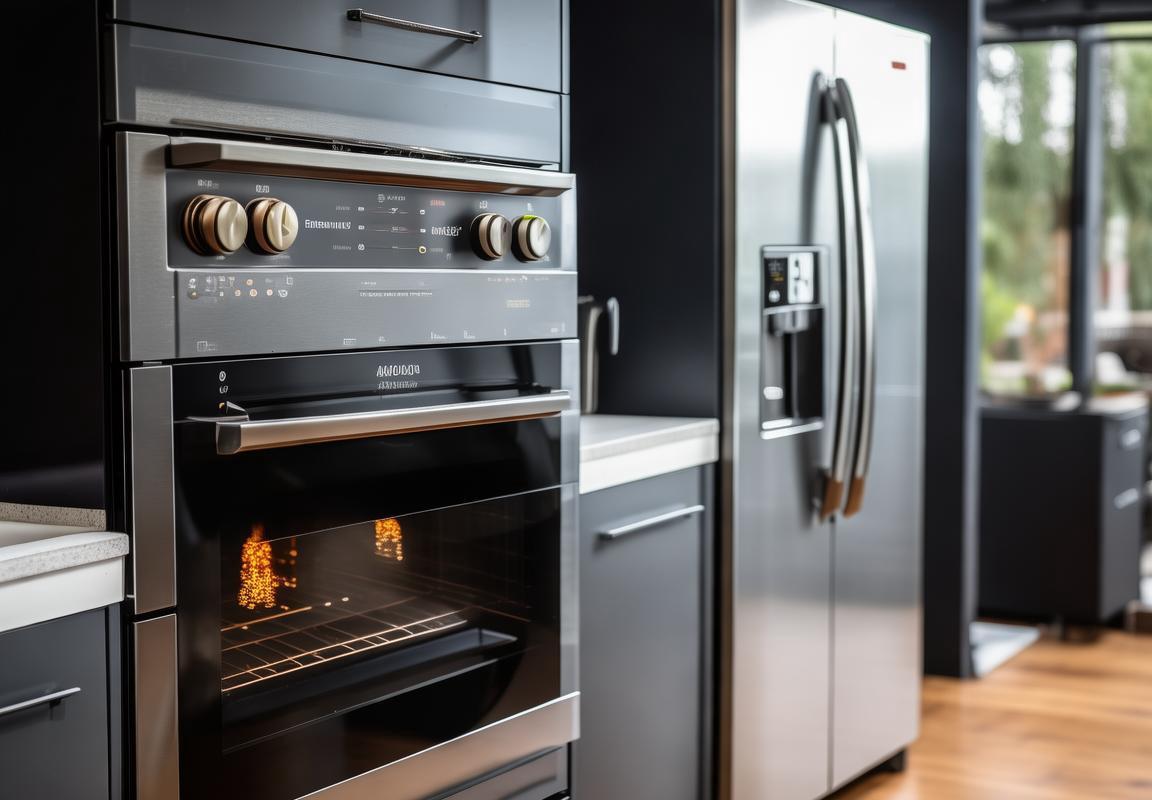
Benefits of CE-EMC Compliant 2200W Appliances
The CE-EMC compliant 2200W appliances have gained significant traction in the market, and for good reason. These devices not only adhere to stringent European and international electromagnetic compatibility (EMC) standards but also offer a range of benefits that appeal to consumers. Let’s delve into the advantages these appliances bring to the table.
Efficiency and Energy SavingsOne of the primary benefits of CE-EMC compliant 2200W appliances is their high efficiency. These devices are designed to convert electrical energy into usable power with minimal waste, ensuring that users get the most out of their energy consumption. This efficiency directly translates to reduced electricity bills and a smaller carbon footprint, making them an environmentally friendly choice.
Reliability and SafetyCE-EMC compliance ensures that these appliances meet rigorous safety standards. They are built with components and materials that are resistant to electromagnetic interference, which not only protects the appliance from potential damage but also safeguards the user from the risk of electric shocks. This level of reliability is crucial, especially in kitchen environments where appliances are frequently used and exposure to water and heat is common.
Advanced Technology IntegrationCE-EMC compliant 2200W appliances often come equipped with the latest technological advancements. From smart features that allow for remote control and monitoring to energy-saving modes that adjust power usage based on demand, these devices are at the forefront of innovation. This integration of technology not only enhances the user experience but also ensures that the appliance is future-proof and capable of adapting to new functionalities.
Customization and FlexibilityConsumers today are looking for appliances that can be tailored to their specific needs. CE-EMC compliant 2200W appliances offer a high degree of customization, whether it’s through adjustable settings, programmable timers, or multiple cooking modes. This flexibility allows users to optimize their appliance for different types of food preparation and cooking techniques, making them versatile kitchen companions.
User-Friendly DesignAesthetics and ease of use are paramount in the kitchen appliance market. CE-EMC compliant 2200W appliances are typically designed with user-friendliness in mind. From intuitive interfaces to ergonomic controls, these devices make it easy for users to navigate and operate them without complications. This design philosophy ensures that even those who may not be tech-savvy can enjoy the benefits of advanced appliances.
Enhanced PerformanceThe 2200W specification is no small feat. These appliances are capable of delivering consistent and powerful performance, whether you’re boiling water, toasting bread, or cooking a gourmet meal. The high wattage ensures that tasks are completed efficiently, and the reliability of the CE-EMC compliance means that the appliance can maintain its performance over the long term.
Longevity and MaintenanceWith the right care, CE-EMC compliant 2200W appliances are designed to last. Their robust construction and adherence to strict standards mean that they can withstand the rigors of daily use. Additionally, many of these appliances are easier to maintain, with features like easy-to-clean surfaces and self-cleaning programs that reduce the time and effort required to keep them in top condition.
Health and WellnessModern consumers are increasingly conscious of their health and wellness. CE-EMC compliant 2200W appliances often come with features that promote healthier cooking methods, such as non-stick coatings that reduce the need for excess oil and fat. This not only improves the nutritional value of the food but also makes for a healthier cooking environment.
Community and SupportPurchasing a CE-EMC compliant 2200W appliance is not just about the product itself; it’s about joining a community of satisfied users. Many manufacturers offer excellent customer support, including warranty services, troubleshooting guides, and even community forums where users can share tips and experiences. This level of support adds to the overall satisfaction and peace of mind that comes with owning a high-quality appliance.
ConclusionThe benefits of CE-EMC compliant 2200W appliances are multifaceted, offering consumers a combination of efficiency, safety, technology, customization, and performance. As the kitchen appliance market continues to evolve, these devices are setting new standards and expectations, ensuring that they remain a top choice for those looking to elevate their culinary experiences and household operations.
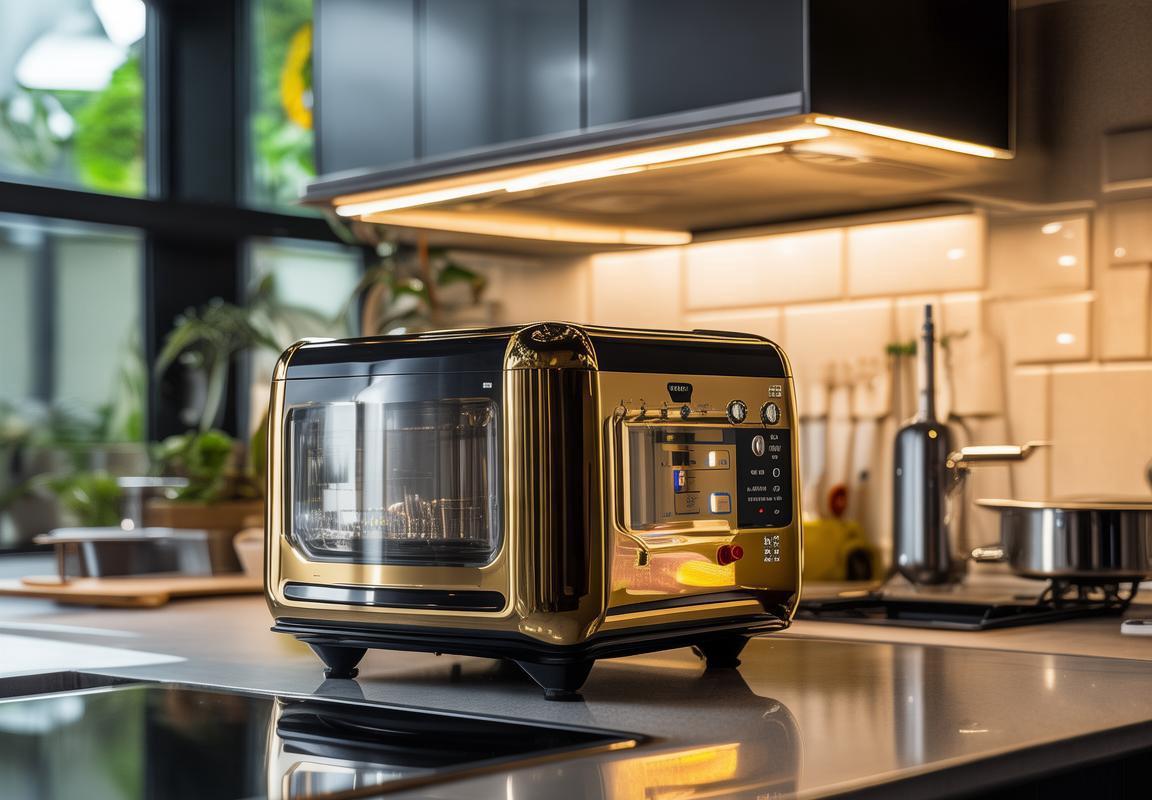
Case Studies: Successful CE-EMC Compliant Products in the Market
In the competitive landscape of kitchen appliances, several brands have stood out with their CE-EMC compliant products. Let’s delve into a few case studies that showcase the success of these compliant appliances in the market.
The first standout is the Siemens SM23N161GB induction cooktop, which boasts a 2200W power rating. This sleek and modern appliance not only meets the stringent CE-EMC standards but also offers precise temperature control and rapid heating capabilities. Customers have praised its efficiency and ease of use, making it a top seller in Europe.
Moving to the United States, the Whirlpool WFG510F0MS refrigerator is a prime example of a CE-EMC compliant 2200W appliance. With its advanced inverter technology, this fridge ensures a stable and energy-efficient performance, maintaining optimal temperatures for food preservation. Its sleek design and innovative features have garnered a strong following among consumers looking for high-quality appliances that meet international standards.
In the realm of dishwashers, the Bosch Serie 4 SMV46K53EU has made waves. This model, designed for the European market, adheres to the CE-EMC regulations while providing a powerful 2200W motor for quick and thorough cleaning. Users have reported a significant reduction in water and energy consumption, highlighting the appliance’s environmental benefits and its popularity among eco-conscious consumers.
The kitchenaid Artisan Series Blender is another success story. This blender not only meets the CE-EMC requirements but also offers a 2200W motor that delivers exceptional performance. Its durability and versatility have made it a favorite among culinary enthusiasts, who appreciate its ability to handle a wide range of ingredients and recipes.
In the realm of countertop ovens, the De’Longhi TO3300/01 is a testament to the benefits of CE-EMC compliance. This oven, designed with a 2200W heating element, ensures consistent and even cooking. Its sleek design and ease of use have contributed to its success, with many customers noting the appliance’s ability to save time and effort in the kitchen.
In the small appliance category, the Cuisinart CPK-17 PerfecTemp Central Power Pressure Cooker has gained a solid reputation. This 2200W pressure cooker meets the CE-EMC standards and offers a variety of cooking functions, making it a versatile addition to any kitchen. Its ease of operation and the convenience it brings to meal preparation have won over many consumers.
The Gaggenau AB 220-601 induction hob is a high-end example of a CE-EMC compliant appliance. This premium hob, with a 2200W power rating, provides precise cooking control and a sleek, modern look. Its performance and the brand’s reputation have made it a favorite among gourmet chefs and those who demand the best in kitchen technology.
Finally, the KitchenAid KSM150PS 12-Cup Food Processor combines the convenience of a 2200W motor with the brand’s iconic design. This food processor not only meets CE-EMC compliance but also offers a range of attachments for versatile use. Its durability and the convenience it brings to food preparation have made it a sought-after appliance in the market.
These case studies highlight the success of CE-EMC compliant 2200W appliances in the market. From induction cooktops to refrigerators, dishwashers, blenders, countertop ovens, pressure cookers, and food processors, these products have proven their worth in terms of performance, efficiency, and design. As consumers continue to seek high-quality, energy-efficient appliances, the demand for CE-EMC compliant products is only expected to grow.
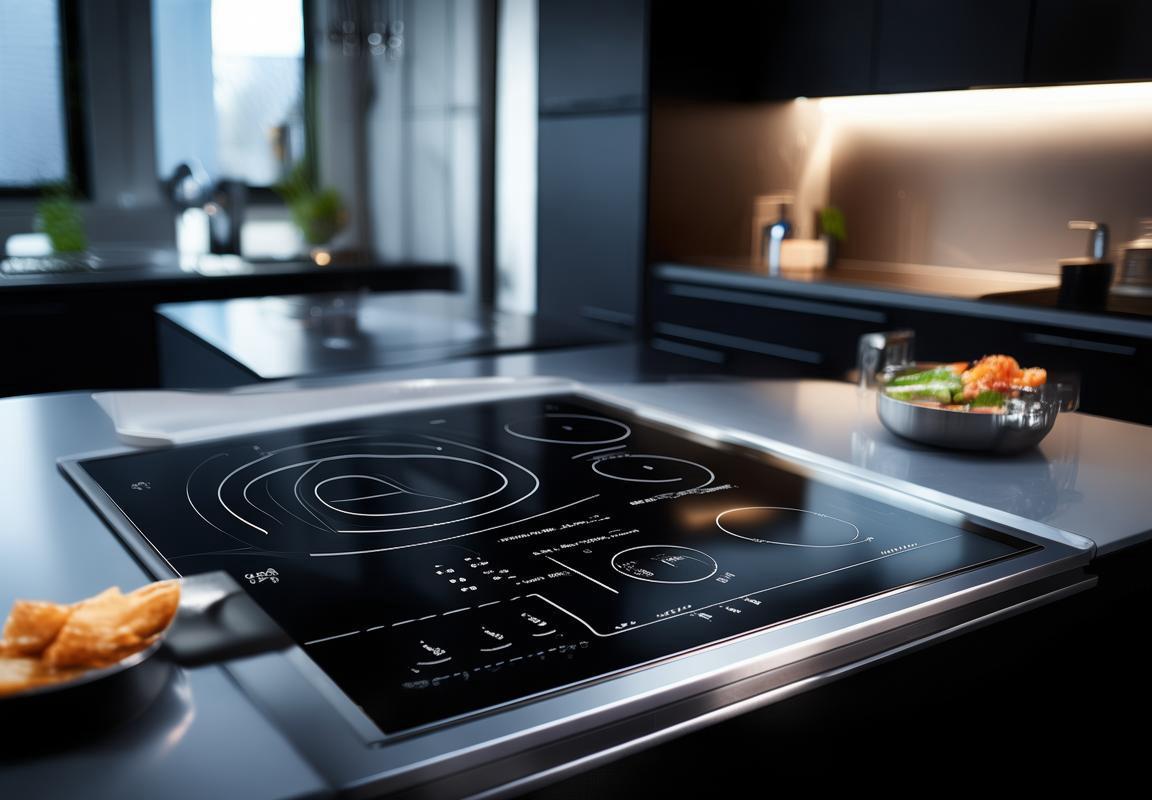
Challenges and Solutions in Achieving CE-EMC Compliance
Navigating the complexities of the electrical appliances market often requires manufacturers to adhere to stringent safety and quality standards. CE-EMC compliance, specifically, is a critical aspect that affects not only the operational safety of kitchen appliances but also their marketability in Europe and other regions. Achieving this compliance comes with its fair share of challenges, which can be overcome with innovative solutions.
The CE marking, which stands for Conformité Européenne, is a symbol of compliance with all the essential requirements of the European Union’s directives. EMC, or Electromagnetic Compatibility, refers to the ability of an electronic device to function without causing interference to other devices, and to withstand the interference from them. When it comes to kitchen appliances, particularly those with a power output of 2200W, the challenges of achieving CE-EMC compliance are multifaceted.
One major challenge is the diverse range of electromagnetic frequencies that kitchen appliances must be tested against. For instance, a 2200W induction cooktop, which is a popular kitchen appliance, generates significant electromagnetic fields that could potentially interfere with other devices, such as medical equipment or wireless communication devices. Ensuring that these devices comply with the strict limits set by the EU’s EMC Directive is no small feat.
Another challenge is the need for comprehensive testing. Manufacturers must conduct rigorous tests to demonstrate that their 2200W appliances meet the required standards for emissions and immunity. This involves using specialized equipment and facilities, which can be expensive and time-consuming. Additionally, the testing must be repeated periodically to ensure ongoing compliance.
The complexity of the certification process is also a hurdle. It involves not only technical expertise but also a deep understanding of the regulatory landscape. Manufacturers must interpret the directives correctly and ensure that their products are designed and manufactured to meet all the necessary criteria. This often requires collaboration with experts in the field and can lead to design modifications that increase development costs.
Despite these challenges, there are several solutions that can help manufacturers achieve CE-EMC compliance for their 2200W appliances:
-
Design Optimization: By carefully designing the internal components and structure of the appliance, manufacturers can minimize electromagnetic interference. This may involve using shielding materials or arranging components to reduce the likelihood of interference.
-
Component Selection: Choosing components that are inherently less susceptible to interference can significantly improve the EMC performance of the appliance. High-quality capacitors, inductors, and transformers can make a difference.
-
Testing and Validation: Investing in state-of-the-art testing equipment and facilities allows manufacturers to conduct thorough tests and validate their products’ compliance. Regular testing during the production process can also ensure consistency.
-
Consulting Experts: Engaging with EMC consultants who specialize in kitchen appliances can provide invaluable insights and help navigate the compliance process. These experts can offer solutions tailored to the specific challenges of 2200W appliances.
-
Continuous Improvement: Implementing a culture of continuous improvement can help manufacturers stay ahead of regulatory changes and technological advancements. This includes staying informed about new standards and regularly updating the product design.
-
Cost Management: While compliance can be expensive, it’s important to find cost-effective solutions without compromising safety and quality. This might involve sourcing components from reliable suppliers or adopting more efficient manufacturing processes.
-
Certification Partnerships: Partnering with certification bodies that have a strong track record in CE-EMC compliance can streamline the certification process and provide peace of mind that the appliance meets all necessary standards.
By addressing these challenges with the right solutions, manufacturers can ensure that their 2200W appliances are not only CE-EMC compliant but also competitive in the market. The effort put into achieving compliance pays off in the form of increased consumer confidence, reduced liability risks, and the ability to access wider markets, particularly in Europe where such compliance is mandatory for most electronic and electrical products.

Regulatory Updates and Future Outlook for 2200W Appliances
In the ever-evolving landscape of kitchen appliance technology, the 2200W specification has become a benchmark for power and efficiency. As manufacturers strive to meet the demands of both consumer preferences and regulatory standards, the outlook for these appliances continues to shift. Here are some key regulatory updates and insights into the future of 2200W appliances.
The European Union’s Restriction of Hazardous Substances (RoHS) directive has been a cornerstone of environmental regulation, and it continues to influence the design and manufacturing of 2200W appliances. With ongoing updates to the RoHS directive, manufacturers must stay abreast of new restrictions on hazardous materials, ensuring that their products are not only compliant but also sustainable.
Similarly, the Energy Labeling Directive in the EU has been updated to reflect the latest energy efficiency standards. This means that 2200W appliances must now adhere to stricter energy efficiency ratings, pushing manufacturers to innovate and optimize their designs to reduce energy consumption.
In the United States, the Department of Energy (DOE) has also been at the forefront of updating regulations to ensure energy efficiency. The DOE has implemented energy conservation standards that directly impact the 2200W appliance market. These standards often mirror those in Europe, emphasizing the need for energy-efficient designs that do not compromise performance.
As for the future outlook, the trend towards smart kitchen appliances is undeniable. The integration of IoT (Internet of Things) technology into 2200W appliances is not just a novelty but a necessity. Smart appliances can offer users greater control and convenience, allowing them to monitor and adjust settings remotely. This connectivity also opens up possibilities for data analytics that can optimize energy use and maintenance schedules.
The rise of renewable energy sources, such as solar and wind power, is another factor shaping the future of 2200W appliances. As these renewable technologies become more prevalent, appliances that can efficiently harness and use this energy will become increasingly important. This could lead to a new generation of 2200W appliances designed with energy storage and management systems that are compatible with renewable energy inputs.
Another regulatory update to keep an eye on is the global push for lower carbon emissions. This is driving the development of appliances that not only consume less energy but also have a lower carbon footprint throughout their lifecycle. This includes the materials used in construction, the manufacturing process, and the end-of-life disposal methods.
In terms of market trends, there is a growing preference for appliances that offer versatility and durability. Consumers are looking for 2200W appliances that can handle a variety of tasks, from cooking to baking, while also being built to last. This demand is prompting manufacturers to invest in research and development to create appliances that are both powerful and reliable.
The future also holds potential for 2200W appliances to become more environmentally friendly. This could involve the use of recycled materials, sustainable production processes, and end-of-life recycling programs. As consumers become more environmentally conscious, they are more likely to support brands that demonstrate a commitment to sustainability.
The regulatory environment is also expected to become more stringent. Governments around the world are likely to continue tightening regulations to ensure that appliances meet the highest standards of energy efficiency and environmental protection. This means that manufacturers will need to be proactive in adapting their products to these new regulations.
In conclusion, the future of 2200W appliances is one of innovation, efficiency, and sustainability. With ongoing regulatory updates and an increasingly environmentally conscious consumer base, the industry is poised for significant advancements. As manufacturers continue to push the boundaries of what’s possible, the 2200W appliance market is likely to see a wave of new technologies and designs that cater to both performance and responsibility.
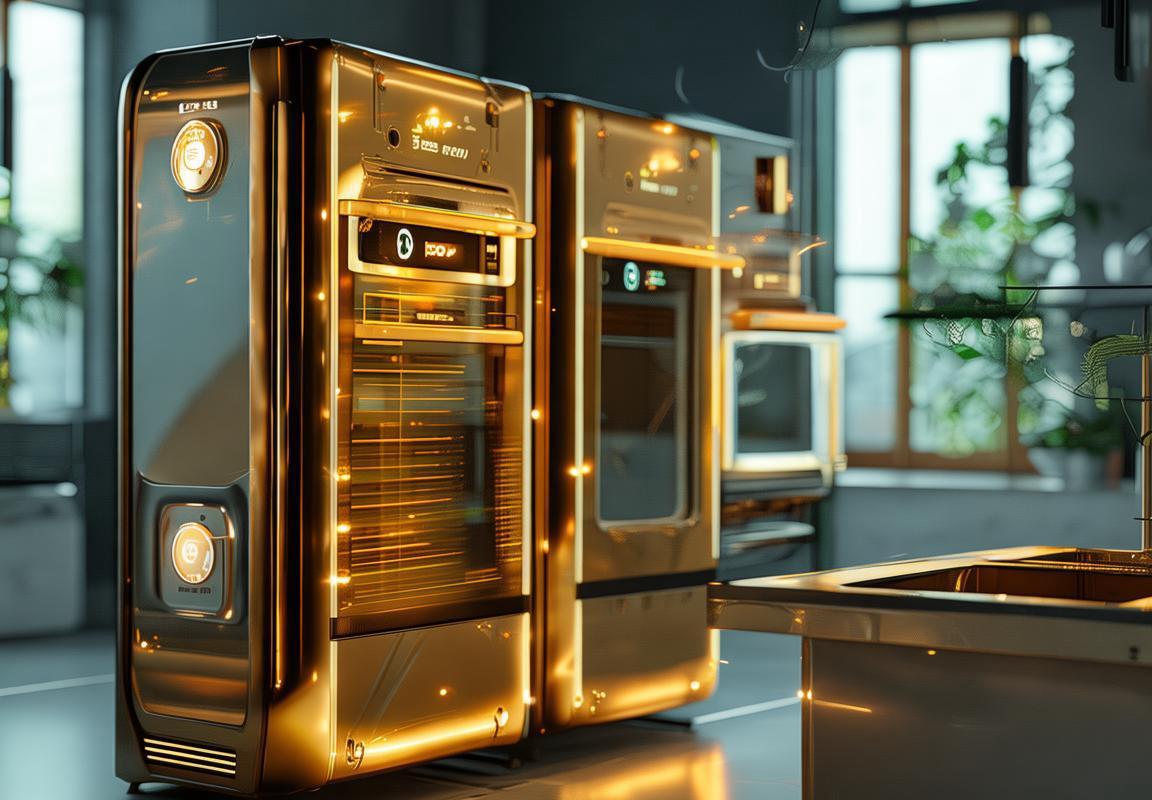
Conclusion: The Role of CE-EMC Compliant 2200W Appliances in Global Market Success
The demand for energy-efficient kitchen appliances has surged, with the 2200W specification becoming a benchmark in the industry. These appliances not only cater to environmental concerns but also offer consumers the convenience and power they need in their daily cooking routines. In this conclusion, we reflect on the role of CE-EMC compliant 2200W appliances in shaping global market success.
In recent years, there’s been a noticeable shift in consumer preferences, with an increasing focus on sustainability and energy-saving technologies. This shift has been a driving force behind the popularity of 2200W appliances, which strike a balance between power and efficiency.
The global market for kitchen appliances is highly competitive, with numerous brands vying for consumer attention. CE-EMC compliance has emerged as a key differentiator, as it ensures that products meet stringent safety and environmental standards. This compliance is not just a legal requirement but also a mark of quality and trustworthiness in the eyes of consumers.
The 2200W specification has become a standard for many high-performance kitchen appliances, such as induction cooktops, ovens, and toasters. These appliances offer a powerful cooking experience without the need for excessive energy consumption. This dual advantage has made them a favorite among environmentally conscious consumers and those looking for cost-effective cooking solutions.
In the European Union, the presence of CE-EMC compliant 2200W appliances is a testament to the region’s commitment to energy efficiency and safety. The EU’s strict regulatory framework has encouraged manufacturers to innovate and produce appliances that not only meet but exceed the required standards. This has led to a market where consumers can choose from a wide range of high-quality, energy-efficient appliances.
Similarly, in the United States, the market for 2200W appliances has seen significant growth, driven by consumer demand for energy-saving technologies. The American market, while less stringent in terms of energy regulations compared to the EU, still values compliance with international standards. This has allowed manufacturers to tap into both domestic and international markets with their 2200W offerings.
The success of CE-EMC compliant 2200W appliances can also be attributed to the advancements in technology. Modern appliances are now equipped with smart features that not only enhance user experience but also contribute to energy efficiency. For instance, induction cooktops use electromagnetic fields to heat pots and pans directly, eliminating the need for a flame and reducing energy loss.
Moreover, the integration of smart technology has allowed these appliances to be more adaptable to user needs. Features like adaptive cooking modes and wireless connectivity have made it possible for users to optimize their cooking process, leading to more efficient energy use and improved cooking outcomes.
Despite the many benefits, achieving CE-EMC compliance for 2200W appliances is not without its challenges. One significant challenge is the cost associated with meeting the rigorous testing and certification requirements. This cost can be passed on to consumers, potentially affecting the price point of these appliances.
Another challenge is the complexity of the compliance process itself. Manufacturers must navigate through various regulations and standards, ensuring that their products meet not only the CE-EMC requirements but also any additional national regulations. This complexity requires a deep understanding of the regulations and often involves working with specialized compliance experts.
Despite these challenges, the market for CE-EMC compliant 2200W appliances continues to grow. This is due, in part, to the increasing awareness of energy consumption and its environmental impact. As consumers become more informed, they are more likely to seek out appliances that not only perform well but also contribute to a healthier planet.
Looking ahead, the future of 2200W appliances seems promising. As technology advances, we can expect to see even more energy-efficient and feature-rich appliances hitting the market. Innovations in materials, design, and manufacturing processes will likely lead to further reductions in energy consumption and waste.
Additionally, regulatory bodies around the world are likely to continue tightening their standards, pushing manufacturers to innovate and improve their products. This trend will ensure that the market for CE-EMC compliant 2200W appliances remains robust and competitive.
In conclusion, the role of CE-EMC compliant 2200W appliances in global market success is undeniable. These appliances have become a symbol of quality, efficiency, and environmental responsibility. As the world becomes more aware of the importance of sustainability, the demand for such products is only expected to rise, further solidifying their place in the global kitchen appliance market.